Related Research Articles

John Douglas Lord was an English keyboardist and composer. In 1968, Lord co-founded the hard rock band Deep Purple, and he became regarded as its leader in the early years. Lord performed on most of the band's most popular songs; he and drummer Ian Paice were the only continuous presence in the band between 1968 and 1976, and also from when it was re-established in 1984, until Lord's retirement in 2002. He also spent time in the bands Whitesnake, Paice Ashton Lord, the Artwoods, the Flower Pot Men and Santa Barbara Machine Head.

The Violin Concerto in D major, Op. 77, was composed by Johannes Brahms in 1878 and dedicated to his friend, the violinist Joseph Joachim. It is Brahms's only violin concerto, and, according to Joachim, one of the four great German violin concerti:
The Germans have four violin concertos. The greatest, most uncompromising is Beethoven's. The one by Brahms vies with it in seriousness. The richest, the most seductive, was written by Max Bruch. But the most inward, the heart's jewel, is Mendelssohn's.

The Piano Concerto No. 5 in E-flat major, Op. 73, known as the Emperor Concerto in English-speaking countries, is a concerto composed by Ludwig van Beethoven for piano and orchestra. Beethoven composed the concerto in 1809 under salary in Vienna, and he dedicated it to Archduke Rudolf, who was his patron, friend, and pupil. Its public premiere was on 28 November 1811 in Leipzig, with Friedrich Schneider as the soloist and Johann Philipp Christian Schulz conducting the Gewandhaus Orchestra. Beethoven, usually the soloist, could not perform due to declining hearing.
Carl Nielsen's Concerto for Clarinet and orchestra, op. 57 [D.F.129] was written for Danish clarinetist Aage Oxenvad in 1928. The concerto is presented in one long movement, with four distinct theme groups.
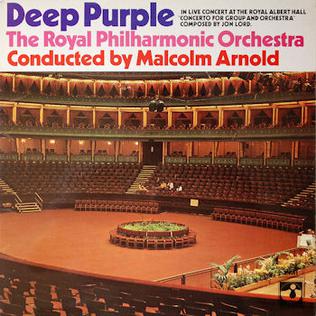
Concerto for Group and Orchestra is a live album by Deep Purple and the Royal Philharmonic Orchestra conducted by Malcolm Arnold, recorded at the Royal Albert Hall, London, in September 1969. It consists of a concerto composed by Jon Lord, with lyrics written by Ian Gillan. This is the first full length album to feature Ian Gillan on vocals and Roger Glover on bass. It was released on vinyl in December 1969. The original performance included three additional Deep Purple songs, "Hush", "Wring That Neck", and "Child in Time"; these were included on a 2002 release. This was the last Deep Purple album distributed in the US by Tetragrammaton Records, which went defunct shortly after.
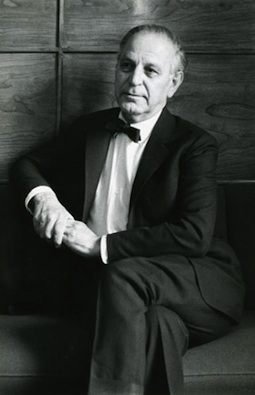
Ulvi Cemal Erkin was a member of the pioneer group of symphonic composers in Turkey, born in the period 1904–1910, who later came to be called The Turkish Five. These composers set out the direction of music in the newly established Turkish Republic. These composers distinguished themselves with their use of Turkish folk music and modal elements in an entirely Western symphonic style.
The two Serenades, Op. 11 and 16, represent early efforts by Johannes Brahms to write orchestral music. They both date from after the 1856 death of Robert Schumann when Brahms was residing in Detmold and had access to an orchestra.
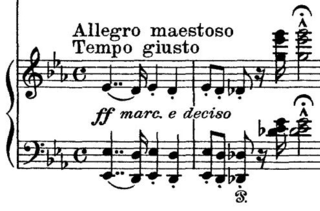
Franz Liszt composed his Piano Concerto No. 1 in E♭ major, S.124 over a 26-year period; the main themes date from 1830, while the final version is dated 1849. The concerto consists of four movements and lasts approximately 20 minutes. It premiered in Weimar on February 17, 1855, with Liszt at the piano and Hector Berlioz conducting.
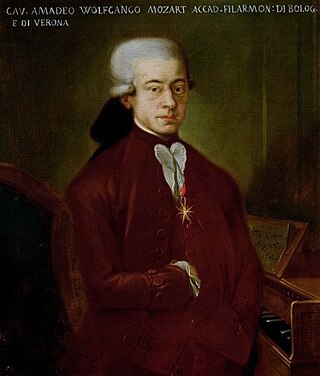
Piano Concerto No. 5 in D major, K. 175, was composed by Wolfgang Amadeus Mozart in 1773, at the age of 17. It is Mozart's first original piano concerto; his previous efforts were based on works by other composers. In 1782, he revised the score and composed a new rondo, adding a flute to the instrumentation.

The Piano Concerto No. 6 in B-flat major, K. 238, was composed by Wolfgang Amadeus Mozart in January 1776. His Concerto No. 7 for three pianos and his Concerto No. 8 in C major would follow within three months. The three works share what Cuthbert Girdlestone refers to as a galant style.
Cello Concerto in E minor, Op. 58 is a concerto written by Sergey Prokofiev between 1933 and 1938. Its duration is approximately 35 minutes. It consists of three movements:
- Andante – Poco meno mosso – Adagio
- Allegro giusto
- Tema (allegro) – Interludio 1 – Variations 1–3 – Interludio 2 – Variation 4 – Reminiscenza – Coda – Più mosso
An organ concerto is a piece of music, an instrumental concerto for a pipe organ soloist with an orchestra. The form first evolved in the 18th century, when composers including Antonio Vivaldi, George Frideric Handel and Johann Sebastian Bach wrote organ concertos with small orchestras, and with solo parts which rarely call for the organ pedal board. During the Classical period the organ concerto became popular in many places, especially in Bavaria, Austria and Bohemia, reaching a position of being almost an integral part of the church music tradition of jubilus character. From the Romantic era fewer works are known. Finally, there are some 20th- and 21st-century examples, of which the concerto by Francis Poulenc has entered the basic repertoire, and is quite frequently played.

August Winding was a Danish pianist, teacher and composer.
The Symphony No. 3 in C major of the Swedish composer Franz Berwald, nicknamed the Singulière, was written in 1845. It is scored for 2 flutes, 2 oboes, 2 clarinets, 2 bassoons, 4 horns, 2 trumpets, 3 trombones, timpani and strings. It is about a half-hour in length and is in three movements:
- Allegro fuocoso in C major
- Adagio - Scherzo - Adagio
- Finale: Presto in C minor

The Twelve Grand Concertos, Op. 6, HWV 319–330, by George Frideric Handel are concerti grossi for a concertino trio of two violins and cello and a ripieno four-part string orchestra with harpsichord continuo. First published by subscription in London by John Walsh in 1739, they became in a second edition two years later Handel's Opus 6. Taking the older concerto da chiesa and concerto da camera of Arcangelo Corelli as models, rather than the later three-movement Venetian concerto of Antonio Vivaldi favoured by Johann Sebastian Bach, they were written to be played during performances of Handel's oratorios and odes. Despite the conventional model, Handel incorporated in the movements the full range of his compositional styles, including trio sonatas, operatic arias, French overtures, Italian sinfonias, airs, fugues, themes and variations and a variety of dances. The concertos were largely composed of new material: they are amongst the finest examples in the genre of baroque concerto grosso.
The Musette, or rather chaconne, in this Concerto, was always in favour with the composer himself, as well as the public; for I well remember that HANDEL frequently introduced it between the parts of his Oratorios, both before and after publication. Indeed no instrumental composition that I have ever heard during the long favour of this, seemed to me more grateful and pleasing, particularly, in subject.
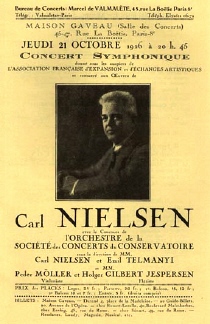
Carl Nielsen's Concerto for Flute and Orchestra was written in 1926 for Holger Gilbert-Jespersen, who succeeded Paul Hagemann as flautist of the Copenhagen Wind Quintet. The concerto, in two movements, was generally well received at its premiere in Paris in October 1926 where Nielsen had introduced a temporary ending. The first complete version was played in Copenhagen the following January. The flute concerto has become part of the international repertoire.
The Piano Concerto is the only piano concerto composed by the Japanese composer Akio Yashiro. The work was composed between 1964 and 1966 from a commission by NHK for National Art Performance of Ministry of Education, Science and Culture. He won 16th Otaka prize with this concerto. On July 10 and 11, 1967, the work was recorded for its premier broadcasting at NHK broadcasting centre and the recording was on air on November 5. This premier recording was performed by pianist Hiroko Nakamura accompanied by NHK Symphony Orchestra conducted by Hiroshi Wakasugi. The first public performance was on November 29, 3 weeks later from broadcasting, at the extra concert of NHK symphony orchestra with conductor Tadashi Mori and the same pianist.

Ferruccio Busoni composed his Concerto for Piano and String Quartet in D minor, Op. 17, BV 80, in 1878, at the age of twelve. The original title was Concerto per piano-forte con accompagnamento di quartetto ad arco, Op. 17. Conceived for string quartet, the piano can also be accompanied by a string orchestra as Concerto for Piano and Strings, the title under which it was published in 1987.
The Piano Concerto is a composition for solo piano and orchestra by the British composer Peter Maxwell Davies. The work was commissioned by the Royal Philharmonic Orchestra and was completed on 24 September 1997. The piece is dedicated to the pianist Kathryn Stott, who premiered the work with the Royal Philharmonic Orchestra under the composer at the Nottingham Royal Concert Hall on 7 November 1997.

Incantations, subtitled Concerto da camera, is a composition for piano and ensemble by Graham Waterhouse, composed in 2015 and first performed in Birmingham.
References
- ↑ Dave Thompson (2004). Smoke on the Water: The Deep Purple Story. ECW Press. p. 313. ISBN 978-1-55022-618-8.
- ↑ The Gramophone. C. Mackenzie. 2008. p. 67.
- ↑ International Piano. Orpheus Publications Limited. 2008. p. 7.